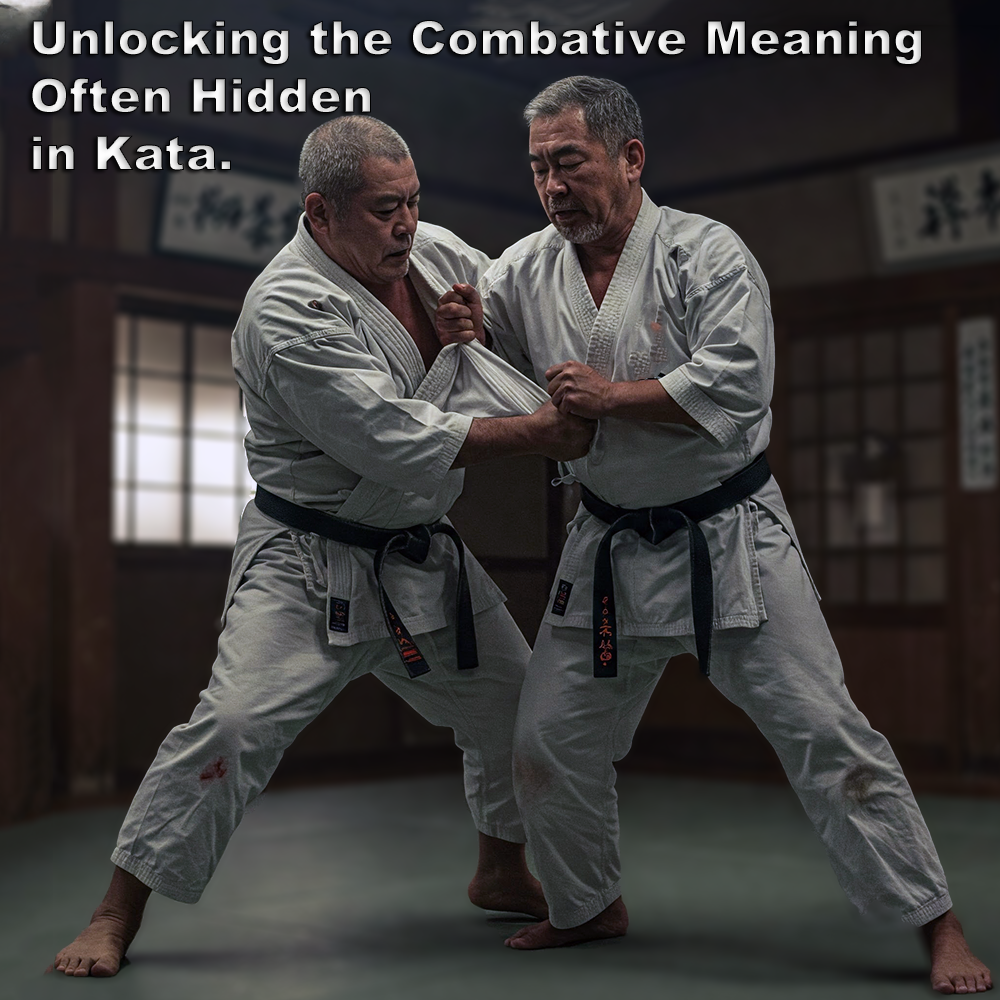
(Approx 2 minute 40 second read)
How do we use kata effectively?
.
I don’t mean the bunkai demonstrations you see at tournaments and in some dojo where you are attacked from many different angles by many people. I’m talking about real effective defense.
.
Someone recently asked me a simple question: “How do you extract the combative information from kata when no one really knows what it was meant to do? Wouldn’t everyone have different interpretations?”
.
It’s a fair question. No one does know exactly. But that doesn’t matter. What matters is that we use simple common sense to answer simple questions.
.
If you want to analyze kata in a more practical way, begin with a couple of ideas.
.
To extract the information you want from kata it’s vital to understand the principles upon which it’s based, and the likely attacks you will face. Remember that they are unlikely to be karate-style attacks.
.
Two fundamental combative principles must always be observed: keeping everything as simple as possible, and seizing and maintaining the initiative.
.
Ignoring these principles could lead to giving your opponent the advantage, exactly the situations kata are meant to help you avoid.
.
Firstly, when fighting, the adrenaline dump may reduce your body’s ability to utilize fine-motor skills. Hence, it’s unlikely you’ll be able to apply overly complex movements. Let’s remove any thoughts of using these types of techniques… just yet.
.
Secondly, keep your number of initial responses to an absolute minimum. If you’ve learned many different responses to a given situation, I’ve written about this previously, by the time you decide which one to use, the situation may have changed and you could be in serious trouble. Adapt a small number of movements rather than remember countless ones.
.
The problems begin with what most people interpret, at the beginning of kata, as a block and counter of some sort.
.
Think about that for a moment… Are you preparing to take control, or just practicing how to fall behind?
.
That tendency to be overly defensive must be avoided. When fighting, it’s important to act decisively.
.
The phrase “karate ni sente nashi” is often misinterpreted as a call to always wait and defend, when in reality it refers to avoiding unjustified aggression, not to hesitating in the face of imminent threat.
.
In the moments before the ‘fight’, a well-practiced preemptive strike is a good option. Waiting may be too late.
.
Remember that action is always faster than reaction. In a real fight you must never allow the opponent to gain the advantage. You must be the one who takes control of the situation and not simply “respond” to your opponent’s actions.
.
From this shift in understanding we can see that waiting, then blocking and countering, is not the answer.
.
We have a far greater need for defense against wild swings, head butts, grabs, tackles etc. With the vast majority of real fights taking place at close range, the majority of applications are also for use at that distance.
.
To begin understanding kata applications, use common-sense principles to define how you need to react if the altercation turns physical.
.
Even from this subtle but necessary change, we can determine that kata provides instruction on a small number of key concepts. They don’t give a technique for every conceivable situation, and trying to apply them that way may actually prevent you from responding quickly and appropriately if it turns ugly.
.
It’s far better to know little, very well, than to know a great deal superficially.
.
So, to answer the question at the start of this article: this approach, grounded insight built on common sense and functional application, is how kata deliver their answers.
.
They only reveal their lessons when you stop looking for techniques, and start understanding purpose.
.
.
Written by Adam Carter – Shuri Dojo
.
